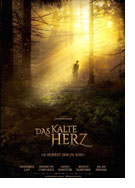

Opening 20 Oct 2016
Directed by:
Johannes Naber
Writing credits:
Johannes Naber, Christian Zipperle, Steffen Reuter, Andreas Marschall
Principal actors:
Frederick Lau, Henriette Confurius, Moritz Bleibtreu, Milan Peschel, David Schutter
It’s medieval times in Germany’s Black Forest and the poorest of the poor dig for coal to sell by the basketful on the marketplace. In this way Peter (Lau) and his father Jakob (André M. Hennicke), filthy and black-faced, try to scratch together a few guilders. On the other side of the coin are the wealthy villagers such as Bastian (Schütter), son of a rich lumberjack and Lisbeth (Confurius), daughter of an equally rich glass maker. They are a dream couple, dancing in the square. Peter immediately falls in love with Lisbeth. Her father, Löbl (Blomberg), demands 500 guilders up front to even consider such a union; anyway, he has already determined that Bastian will be the new son-in-law. Peter, now desperate, strides deep into the woods and meets up with a fantasy figure called The Glass Man (Peschel), who grants him three wishes. Similar to many other fairy tales, the three wishes are put to poor use. Peter then seeks out Dutch Michael (Bleibtreu) who is in the business of trading people’s hearts for stones. He has quite a number of hearts of successful people already hanging up in his part of the forest. Peter agrees to the implantation of a stone and also fills his pockets with coins, but this brings him no closer to his beloved.
The head of camera, Pascal Schmit, and his team filmed in different parts of Germany, such as the Elbsandstein Mountains in Saxony and the Black Forest, as well in a detailed village built especially in Germany’s Babelsberg Film Studio. The timeless story could have occurred in the 21st century if one believed that the deceased were reborn as animals such as a dog or a robin, or that people should wear tattoos on their faces to indicate status in society. The film is based on a story by Wilhelm Huaff, whose literary work was created in the last three years of his life before he died in 1827, only 25 years old. Das Kalte Herz has been filmed in 1923, 1933, and 1950, as well as on stage with marionettes with the Augsberger Puppenstube in 1978, and as a six-part TV series, also in 1978. I especially liked the dancing, the mysterious whistle, and the charismatic bird. The future of German cinema is in good hands with young German actors such as Frederick Lau, Henriette Confurius, and David Schütter. Naturally, it’s satisfying to see that experienced German actors are still in fine form, such as Bleibtreu, Wiesnekker, and Blomberg. Suggested for viewers 12 years and older. (Becky Tan)